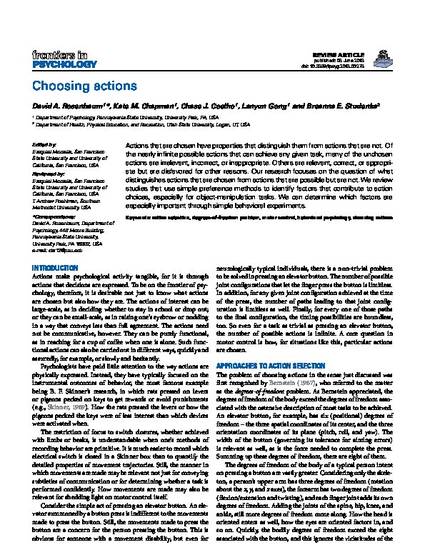
Article
Choosing actions
Frontiers in Psychology
Document Type
Article
Publisher
Frontiers Media
Publication Date
6-3-2013
Disciplines
Abstract
Actions that are chosen have properties that distinguish them from actions that are not. Of the nearly infinite possible actions that can achieve any given task, many of the unchosen actions are irrelevant, incorrect, or inappropriate. Others are relevant, correct, or appropriate but are disfavored for other reasons. Our research focuses on the question of what distinguishes actions that are chosen from actions that are possible but are not. We review studies that use simple preference methods to identify factors that contribute to action choices, especially for object-manipulation tasks. We can determine which factors are especially important through simple behavioral experiments.
Citation Information
Rosenbaum, D. A., Chapman, K. M., Coelho, C. J., Gong, L., & Studenka, B. E. (2013). Choosing actions. Frontiers in Psychology. 4, 1-14. doi:10.3389/fpsyg.2013.00273
